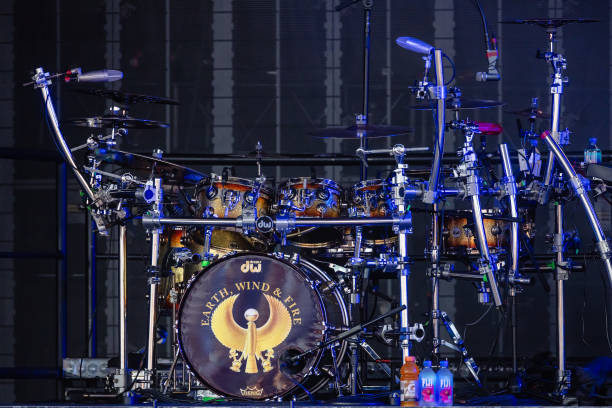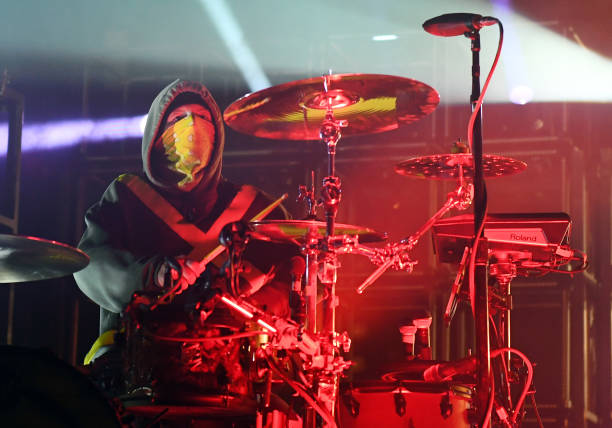Sometimes, it’s not easy to describe music, how it feels. You’re sitting in front of a drum kit. The beat drops. Boom: your chest tightens, your mind lights up, and something electric flickers behind your eyes. You might even “see” it: a flash of blue, maybe gold, or a pulse of red when the toms kick in. Some folks chalk it up to imagination. But what if it’s more? What if your senses are crossing wires, on purpose? It’s called synesthesia, and if you’re a drummer, there’s a good chance rhythm hits you a little differently.
What Is Synesthesia?
Synesthesia isn’t a buzzword or some artsy metaphor. It’s a real neurological phenomenon where one sense triggers another. Hear a sound? Boom, you see a shape. Taste sugar? Maybe it feels like velvet.
There are many types, but when it comes to music, chromesthesia is the most common, when sound creates color. Some people see numbers in colors. Others feel textures in smells. Musicians often experience sound and vision together. That’s where things get really interesting.

Synesthesia and Music
A few famous names have openly shared their synesthetic experiences: Billie Eilish, Lorde, and Kanye West. They see actual colors when they hear music. Not just “oh, that sounds warm,” but swirling, glowing shades moving in time with the notes.
For synesthetes, music isn’t just sound. It’s visual, emotional, and physical: all at once. Some even describe it as reading music like a moving painting.
How Drummers Experience Synesthesia
Drumming is different from melodic instruments. It’s raw, rhythmic, and physical. You don’t just hear drums: you feel them in your bones.
Drummers with synesthesia often report shapes or pulses instead of individual notes and flashes of color with each hit, like a sharp red with a snare or a wave of blue in a fill. Even drummers without full synesthesia sometimes notice a kind of visual echo or imprint of the rhythm.
Seeing Rhythm Without Synesthesia
Some non-synesthetes report seeing visual patterns or feeling color associations during drumming. This is sometimes called associative perception: your brain builds links between sounds, moods, and colors. The longer you drum, the stronger the associations get. It can become a private sensory language between rhythm and your mind.
The Brain Science Behind Synesthesia
In synesthesia, there’s extra cross-talk between brain regions. The auditory cortex (hearing) fires signals to the visual cortex (seeing). A snare hit isn’t just heard, it’s seen.
Drumming already lights up the brain through motor control, auditory memory, coordination, and timing. If you have synesthesia, this sensory activity multiplies. Even without it, rhythm can still trigger cross-sensory effects in your brain.
Do Drummers Experience Synesthesia Differently?
Yes, drummers often describe patterns and motion instead of single-note colors. A guitarist might say, “This note is yellow.” A drummer might say, “This groove is a twisting green rope pulsing left to right.”
This is because drumming is cyclical and spatial, not linear like melody. It loops, hits, and evolves, creating moving visual patterns in the mind.
Synesthesia: A Gift or a Distraction?
It depends on the musician. Some say it deepens musical connection and creativity, while others find it can be sensory overload when trying to keep tempo.
Most drummers who have it describe it as beautiful and personal, a secret visual dimension of rhythm they wouldn’t give up.
Can You Train Your Brain to See Rhythm?
True synesthesia is inborn, but you can develop stronger sensory associations with drumming:
- Use colors when writing drum tabs
- Close your eyes and imagine shapes or motion
- Assign colors to styles: funk = orange, metal = black
Over time, your brain can link sound and color naturally, enhancing your drumming creativity.
Rhythm, Culture, and Color
Synesthetic drumming might sound modern, but ancient cultures were already there. Shamans used drums for trance and vision quests, and drums were spiritual bridges in many traditions.
Today, artists still paint to the rhythm or compose music to visualize sound. The human brain has always linked rhythm with visuals and emotion.
Final Thoughts
Not everyone hears a snare and sees pink. Not everyone plays a groove and watches spirals in the sky. But even if you don’t have synesthesia, you’ve likely felt it: the chill of a blue bass line, the warmth of a golden fill, or the red spark of a rimshot that hits just right.
Your rhythm still paints. Next time you sit down at the kit, sticks in hand, ask yourself: What color is your groove?
